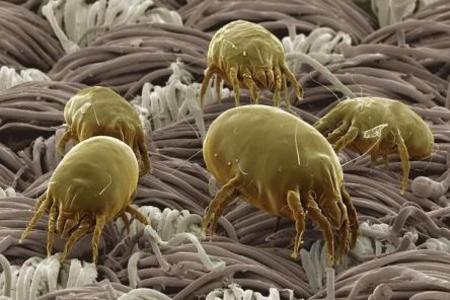
For many years there has been been an ongoing debate about whether or not there is a link between Indoor Allergies and Carpets. You may be surprised to know there has been exhaustive research on this subject.
Studies and research have debunked several myths related to the subject including the following issues:
Myth 1: Carpet causes asthma and triggers allergic reactions.
Findings from comparison data supports that the link between carpet usage and the incidence of asthma or allergies does not exist.
Based on 10 years of data, scientists found that while carpet use in Sweden steadily declined, allergic reactions were on the rise.
Myth 2: Carpet retains allergy-causing substances.
While this statement is true, the key in it is that carpet ‘retains’ allergy-causing substances… to that end, carpet holds allergy-causing substances from becoming airborne, and minimizing allergen levels in the breathing zone.
Vacuuming carpet regularly will refresh filter properties of carpet to cause more allergens to become removed from the breathing zone by the filter properties of carpet.
It is important to note that in order to minimize the re-release of allergens into the breathing zone, you must use the proper type of vacuum.
Studies have proven the effect of frequent vacuuming to reduce house dust, dust mites, and allergen levels in carpet significantly.
There are vacuum cleaner models that are most effective in soil removal and dust containment, while keeping carpet looking good.
Myth 3: Latex in carpet materials triggers allergic reactions.
While carpet does contain synthetic latex fibers, and the carpet backing that holds the fibers together also contains latex… the latex is synthetic. Studies have shown that it is the natural latex causing allergic reactions, and not synthetic latex.
Carpet is primarily constructed with the same materials found in most clothing and other everyday fabrics, including nylon and polyester.
There are a few steps you can take to reduce allergic reactions in your home. While some are complicated and time consuming, there are some easy things you can do to help, and depending on the allergies you suffer from, some may prove more effective than others.
Remove carpeting and replace with linoleum or hardwood flooring and area rugs. If you are unable to do this, be sure to vacuum weekly with a HEPA air filter vacuum cleaner.
Also, be sure to wash area rugs and floor mats once a week, and shampoo wall-to-wall carpeting periodically.
As indoor air quality, and the quality of the air in our breathing zone becomes an important environmental issue, we are discovering the impact of construction materials, surface finishes, interior furnishings, office furniture, and cleaning agents and other solvents on the quality of our indoor environment.
These concerns inspired the carpet industry to initiate lowering chemical emissions from new carpet. Attempts to better understand the types of allergens found in older carpet, and how to minimize the effects were studied in research labs… with surprising results.
When the amount and types of chemicals and allergens were being categorized during research, scientists discovered carpet was one of the lowest emitters. Emission levels from carpet were determined to be well below recommended guidelines, and with fresh ventilation, carpet emissions were barely detectable within 72 hours after installation. It is worth mentioning that this was the case for both natural and synthetic fiber carpets.
Most of us have the impression that we should only clean our carpet when it begins to appear dirty and soiled. Because new carpet has been engineered to withstand stains, there are many who fail to regularly clean their carpet… which results in not only soil, but allergens to build-up within the pile of the carpet. It is important to note that carpet should be cleaned BEFORE showing signs of soil and dirt.
A positive characteristic of carpet beyond both the visual and comfort appeal, is that when these allergens become ‘trapped’ in the carpet pile, they are not released into the breathing zone. This attribute is considered an advantage over hard surface flooring because it is better to have the dirt, allergens, and bacteria carrying particles held by the carpet until it is vacuumed away, than to have it stirred up by constant foot traffic to make it airborne right into the breathing zone of our indoor environment.
Allergens are only released into the breathing zone when the carpet holding threshold has been reached… making the carpet unable to trap more of the allergens and dust particles.
This allergen is only released into the breathing zone when the carpet pile has become filled with allergen.
Cleaning carpet more often can reduce the number of allergens in the home and prolong the life of the carpet.
Synthetic floor covering surfaces like carpet, ceramic tile, and sheet vinyl to not promote biological growth, however airborne biologicals collect upon these surfaces. Studies indicate no difference in biological levels among these synthetic surfaces. It has been found that contaminated cotton mops, and poor maintenance procedures cause these hard surfaces to hold higher biological loads. Mops should be carefully dried and disinfected after each use to limit the spread of infectious organisms.
Airborne particulates and other allergens were found to be higher above hard surface floorcovering because it is not designed to collect and hold airborne contaminants.
Carpet cleaning studies have revealed surprising results… which is just the opposite of the suggestion that carpet is the source for airborne biologicals and allergen… assuming the contaminants can be found in the carpet dust. In fact, it is suggested that carpet is actually a very effective trap for pollutants…
Carpet cleaning researchers found that almost all biologicals and allergen collected by carpet is easily removed by carpet cleaning. The key to reducing the biological load on any flooring surface is regular cleaning and vacuuming.